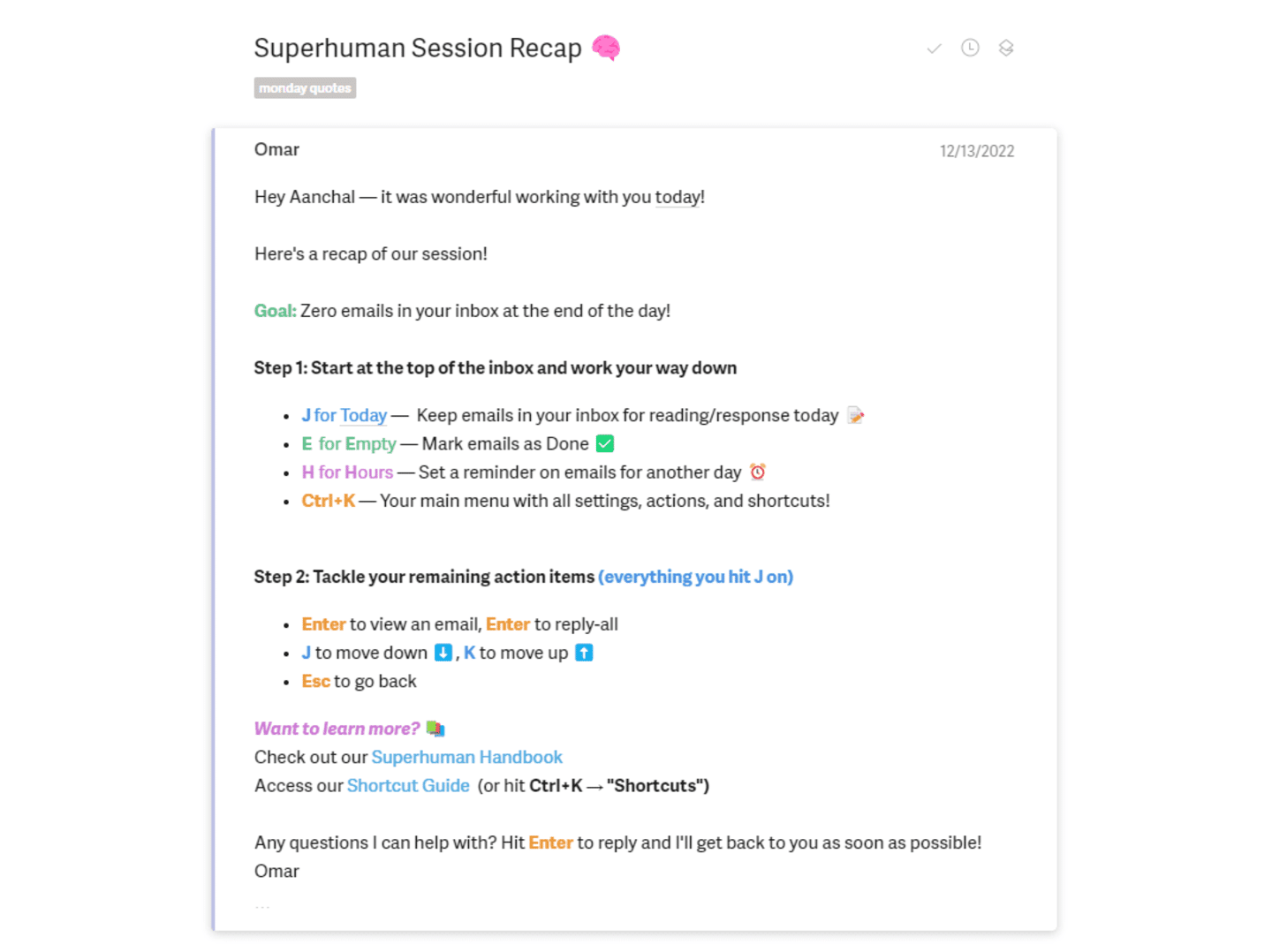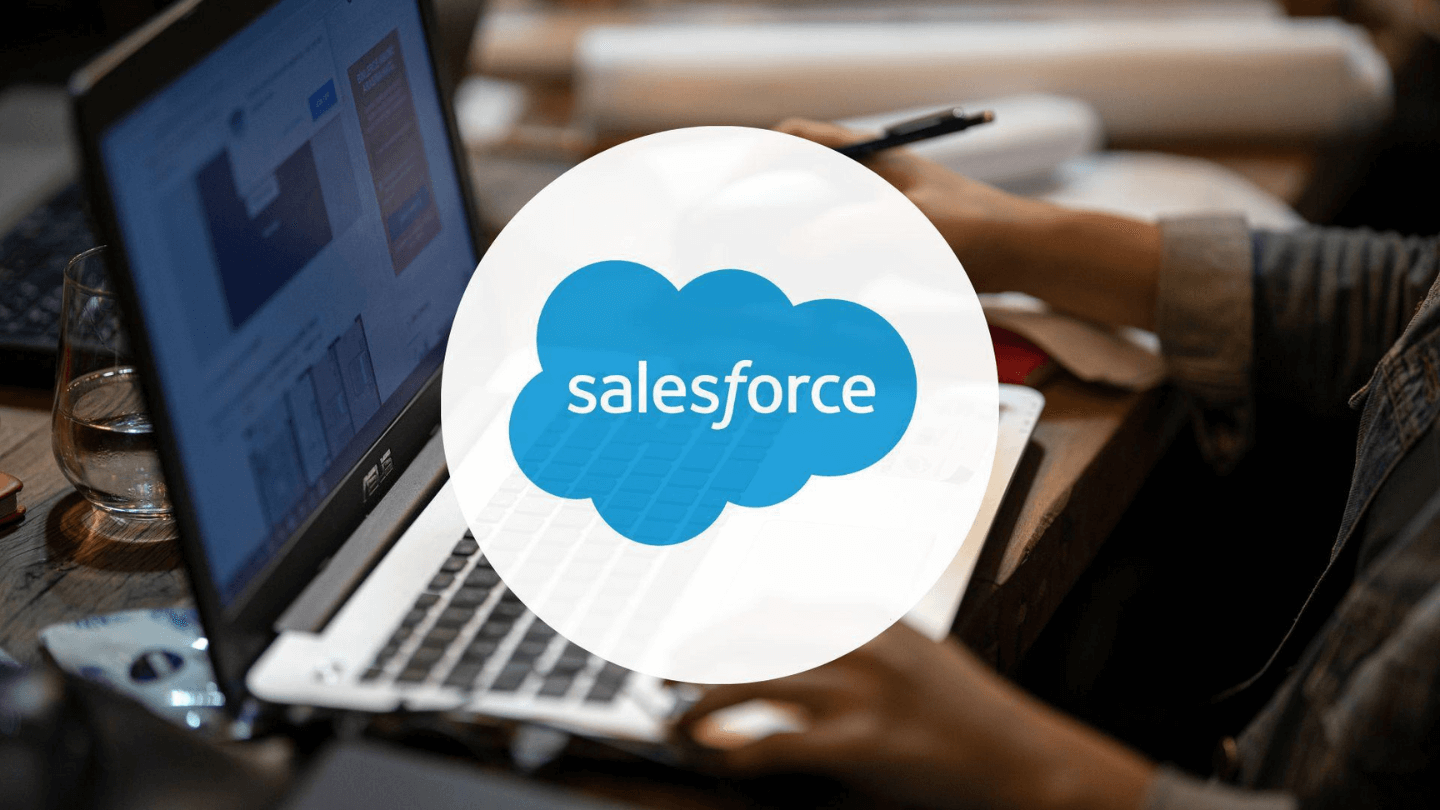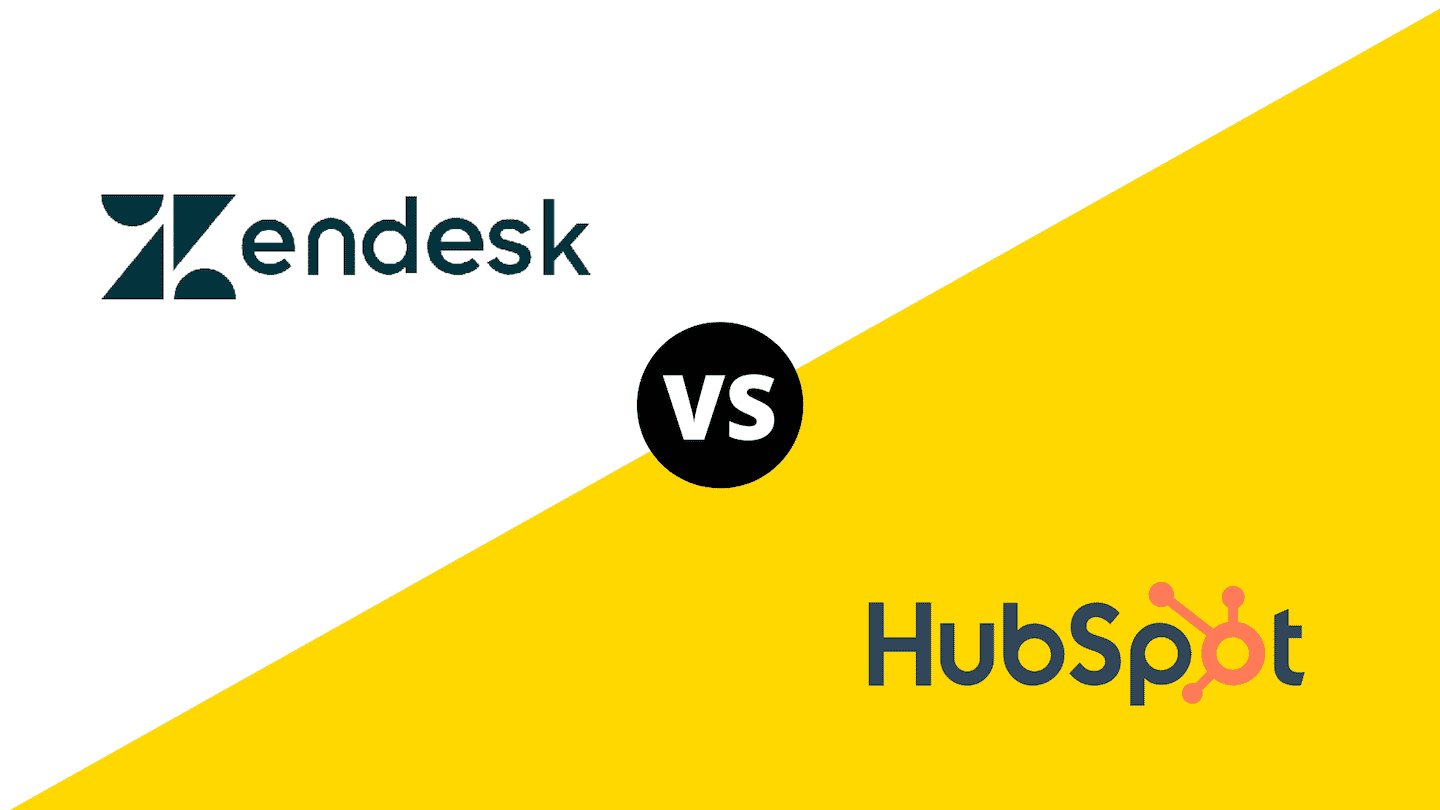Customer onboarding aims to define several elements: communication (Who are the contact points? How do I contact them?), objectives (How are they measured? How can I access the reporting?) and payment (What are the payment conditions? How does invoicing work?). How does invoicing work?)
If you want to set up a successful onboardig, you’ll need to go through several stages. We won’t go into detail about these steps in this article, but we’ll list the four most important ones for you:
- Kickoff meeting: Presentations, definition of communication flows, and collection/confirmation of objectives and KPIs.
- Aha moment: Communicate the first result to the customer, explain the next steps, and explain how the first result fits in with the customer’s objective. If it’s SaaS (self-onboarding), you can congratulate the customer and explain how the first result fits in with their objective.
- 30-day check-in: The aim is to solve the problems that prevent customers from getting maximum value from their purchase. It’s not a question of upsell or cross-sell at this stage. Make sure you stay focused on the first objective, and keep the customer focused on the first objective.
- 90-day check-in: The aim is to validate (or not) the relevance of the solution with the customer. If it’s approved, you can commit it for a longer period. Likewise, there’s no upsell or cross-sell at this stage. Make sure you stay focused on the first goal, and keep the customer focused on the first goal!
Sommaire
10 customer onboarding best practices that work in B2B
#1 Define the type of onboarding
Defining the type of onboarding you want for your customers is very important to best meet their needs. The onboarding you choose depends on what you want: do you want your customer to be independent? Or do you want to build a relationship of trust with your teams?
This is a very important step in defining the basis of the customer-supplier relationship.
So, before setting up your onboarding, think about what you want to share with your customer, and what type of onboarding you’ll choose. There are several models to choose from:
- Self-service” onboarding : this type of onboarding works well if you offer a simple product that doesn’t require much time or explanation to get up and running. This method consists in setting up a sort of start-up guide that allows customers to be autonomous in their onboarding.
- Low-touch” onboarding : this type of onboarding takes things a step further, with visits to products in the application or tutorials on how to get started, for example. Unlike self-service onboarding, it offers some human assistance services, but never one-to-one. This type of onboarding is suitable for less complex products, and has been adopted by many companies such as Zoom, Canva and Mailchimp.
- High value-added” onboarding : this is the most personalized type of onboarding, very useful if you’re offering a complex product that requires several installation steps, for example. This onboarding will lead you, for example, to create personalized welcome documents and send summaries of your exchanges to your customers.
#2 Choose company contact points
Once you’ve decided on the type of onboarding you’d like to implement, you need to identify the team that will be in charge of it, and identify each person’s tasks.
First of all, you can designate a person on the customer’s side to be the single point of contact at the reception desk.
Next, be sure to set aside time in the launch call agenda to designate a reference person.
#3 Bring your teams together
Ensure good communication between sales and support teams.
To ensure good communication between teams, you can notify support teams of a new customer to be onboarded.
Don’t hesitate to set up a coherent tracking table that teams can access to increase efficiency.
#4 Choose the right tools
To facilitate customer onboarding, choose the right tools.
Setting up an onboarding system for your new customers can be quite cumbersome, so you’ll need to choose the right tools to have the most optimal onboarding experience possible.
These tools will enable you to communicate effectively with your customers, automate some of your tasks and track onboarding KPIs.
Tools like Appcues enable you to build and test your onboarding flows on an ongoing basis in order to improve your onboarding experience.
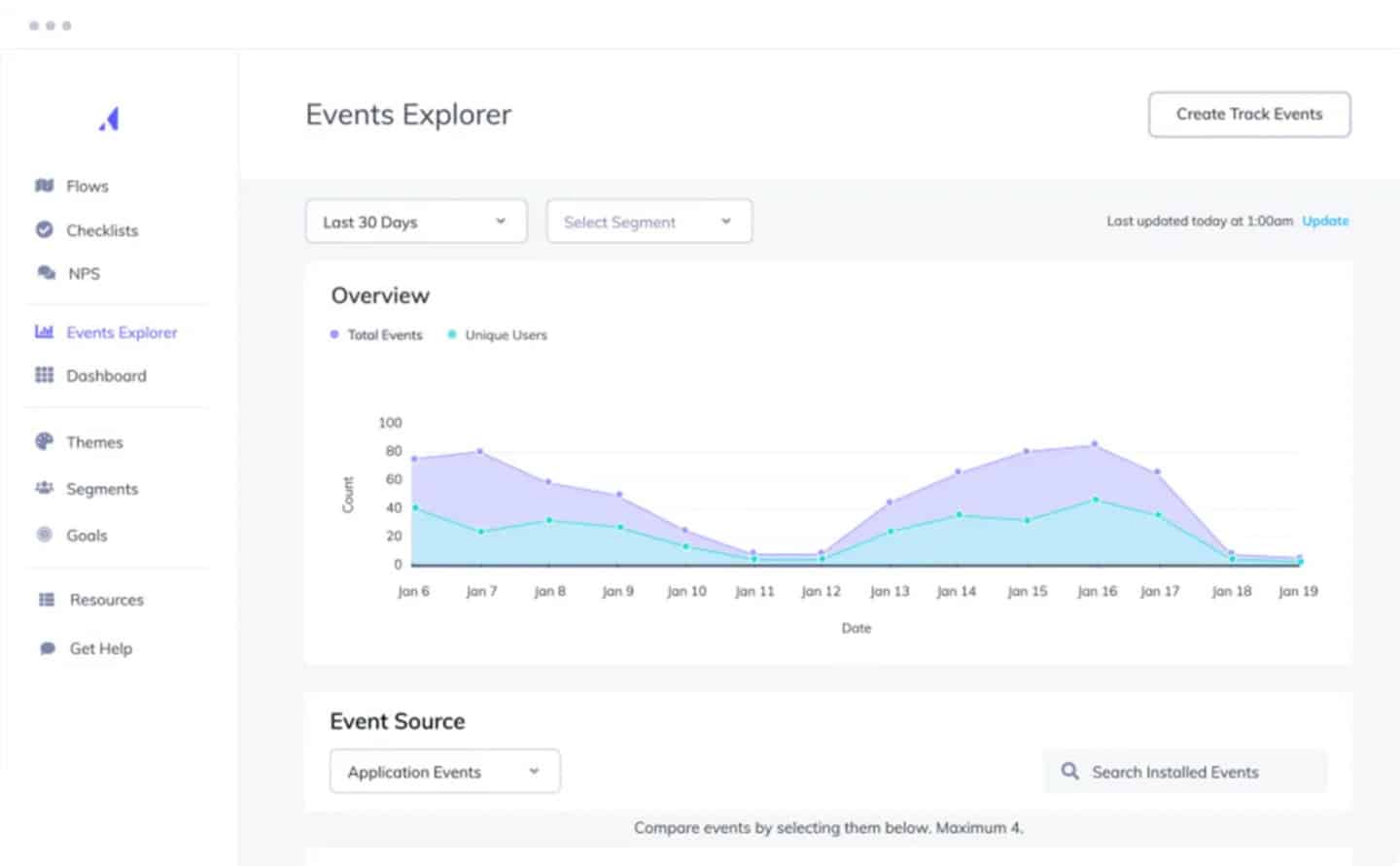
#5 Use as few emails as possible
To make your onboarding easier to read for your customers, make sure you send as few emails as possible.
A large proportion of the emails we receive are wasted, so there’s no need to send more. Instead, I advise you to store all the resources your customers will need on a website, for example. This saves them time searching for information in their mailboxes, and is an invaluable time-saver in the onboarding phase.
Don’t hesitate to allow customers to make comments or give them editing rights on the document, which they will update as they onboard. This document can also be used as a basis for adding any thoughts your teams share with your customers, and assigning them to the corresponding task.
#6 Segment your customers
If you want to offer more effective onboarding, don’t hesitate to customize it according to your customer segments.
If your products are aimed at a wide variety of customers, it’s quite likely that some tasks won’t be relevant to some of your customers. To best target your customers’ needs, you can divide them into segments and create onboarding processes tailored to each.
Segmenting customers can be a tricky business, not least because company size is not always the right measure. For example, a team of three and a team of 300 may need to go through the same type of onboarding if they use the product in the same way.
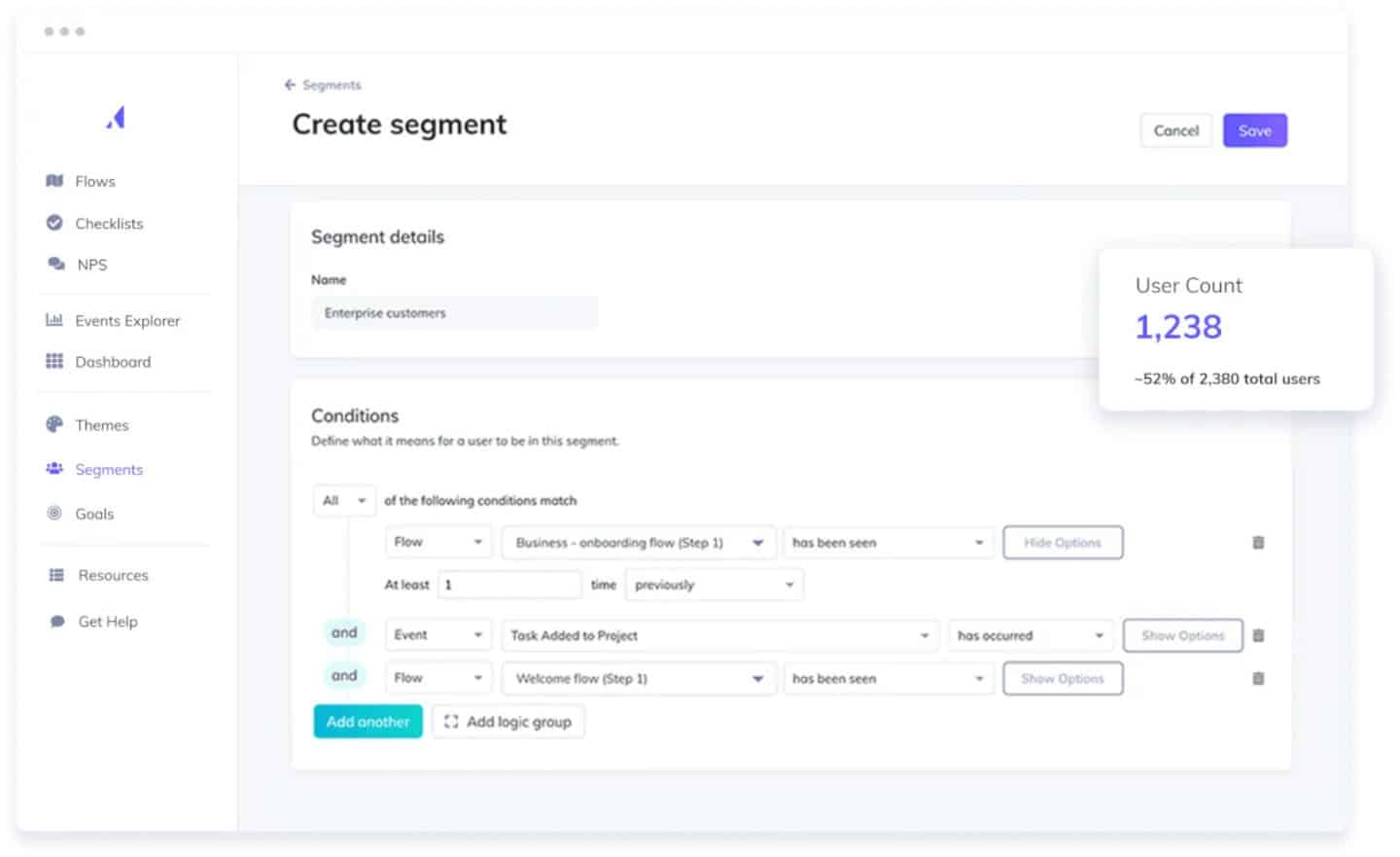
I recommend that you define a complete onboarding template, which you can then customize for each customer, by deleting irrelevant tasks or adding what’s missing. Eventually, this will enable you to identify commonalities between companies (their objectives, their timeframes, the products they buy…) and divide your customers into segments more easily.
You can also choose to customize your onboarding templates according to the life cycle of your customers, and build specific templates for each task.
#7 Automate as many tasks as possible
To make onboarding as efficient as possible, don’t hesitate to personalize it by automating certain tasks.
You can, of course, divide your customers into segments, or create separate onboarding templates for each segment, which you can also adapt according to the customer’s lifecycle.
For greater efficiency, you can also automate certain tasks in the onboarding process. There are a whole host of “learning management systems” (LMS) like Northpass that can be used to set up personalized learning paths and automatically guide customers.
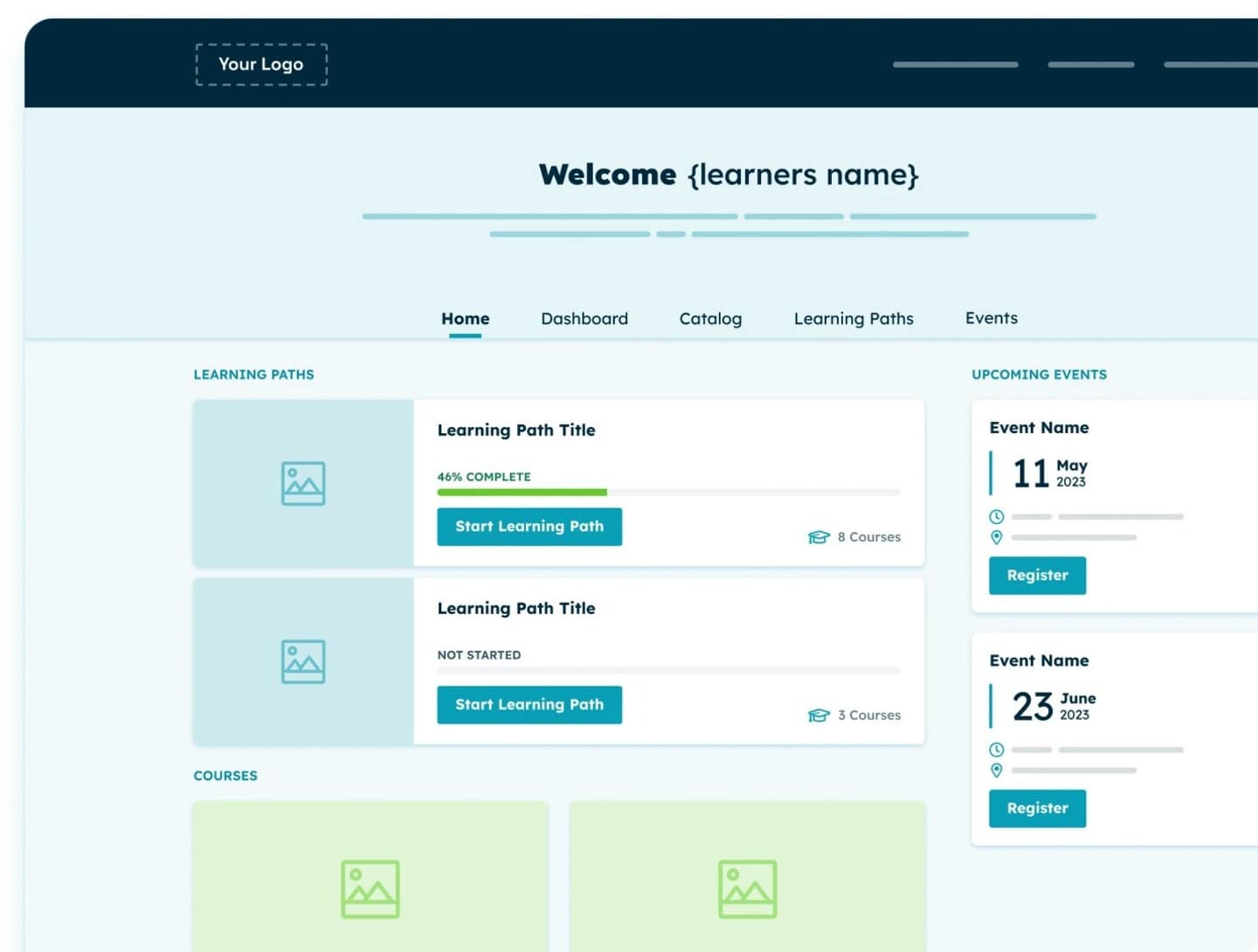
In particular, this type of tool makes it possible to host all your training content in a central online repository to which customers and team members have access. It’s a huge time-saver, especially when it comes to organizing training content.
#8 Create a relevant tracking table
If you want to keep track of the progress of each onboarding, don’t hesitate to create a clear and relevant tracking table.
This table will enable you to define the onboarding phases and get a real-time overview of the onboarding processes for all your customers.
This is essential if you want to continuously improve your onboarding process. The data you can gather from this table will enable you, for example, to identify the customers who need the most help, and direct efforts where necessary.
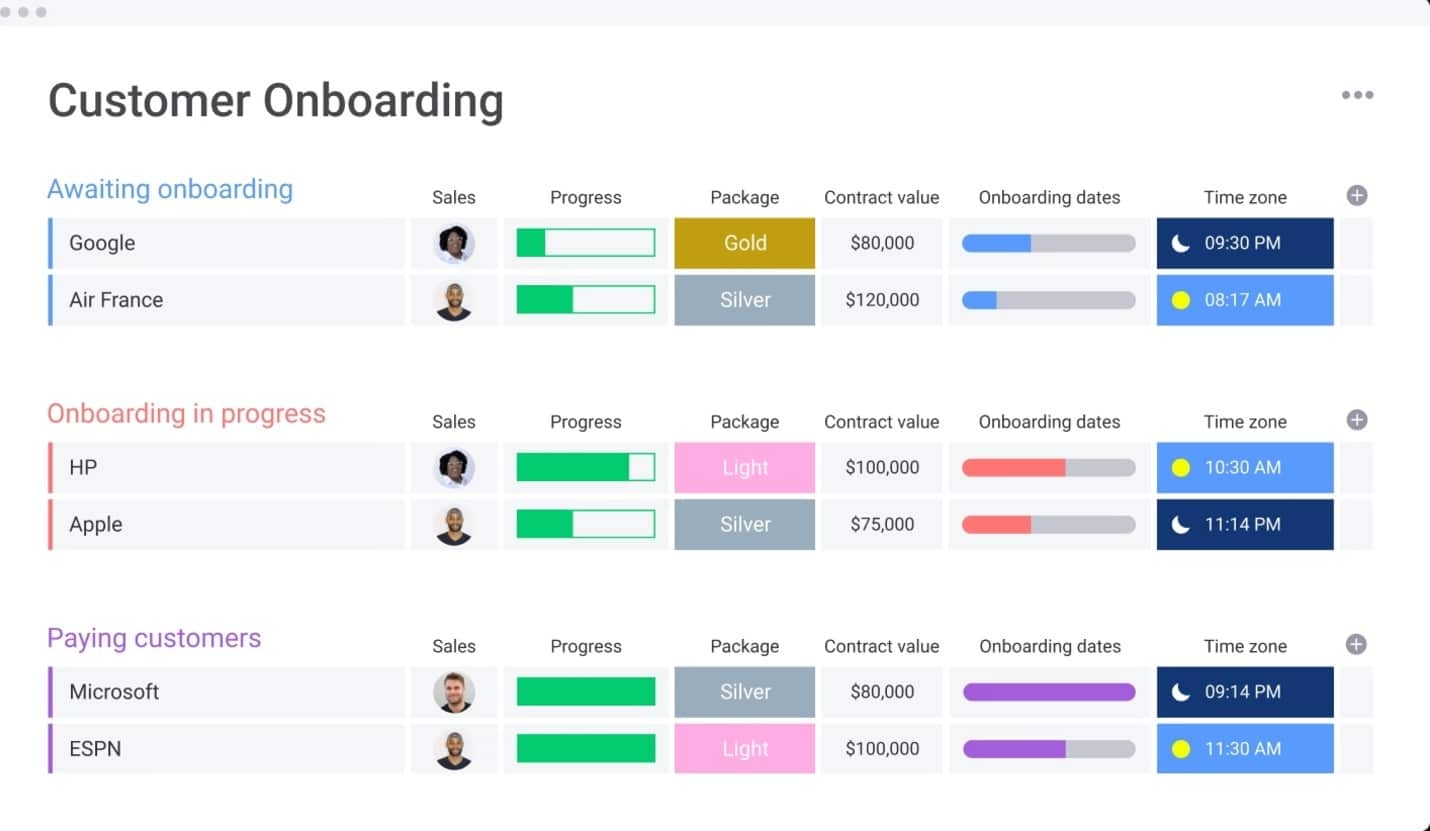
Eventually, this data will also enable you to identify the difficulties encountered by customers, and the reasons why some of them give up even before completing onboarding.
#9 Analyze performance
To improve your onboarding, you first need to analyze your performance.
1. Time to Value (TTV)
Time to value (TTV) is one of the most important measures of customer integration. This measure represents the time it takes for a new customer to learn how to use your product or service well enough to derive full value from it. The lower your company’s average TTV, the better. Low time to value means your integration process runs smoothly, and your customers can start benefiting from their products quickly. A longer time to value usually indicates that some aspect of your integration process may be working more efficiently.
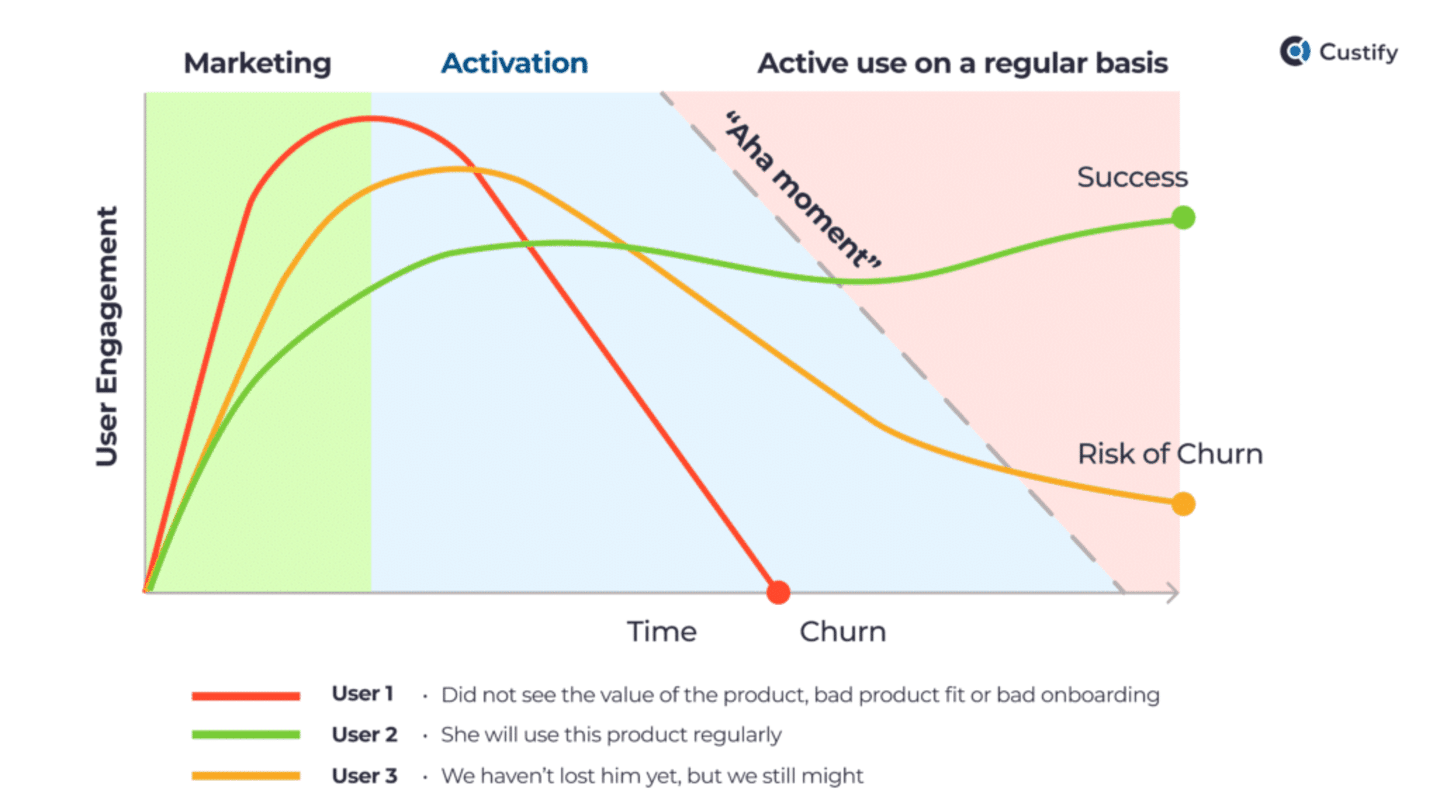
2. Support tickets
The number of support tickets received by your customer service team can also be a valuable indicator of how successful your onboarding has been. If you receive a large number of tickets, which customers usually send when they can’t find the information they need from the available documents, this is a sign that your resources are insufficient.
3. Customer Lifetime Value
Customer Lifetime Value (CLV) is another useful measure of onboarding. It estimates the amount a customer will spend on your company between the time they sign up and the time they end their relationship with your company. Very often, the higher the value, the better the experience.
This is a fairly useful measure for identifying improvements to be made to your onboarding program.
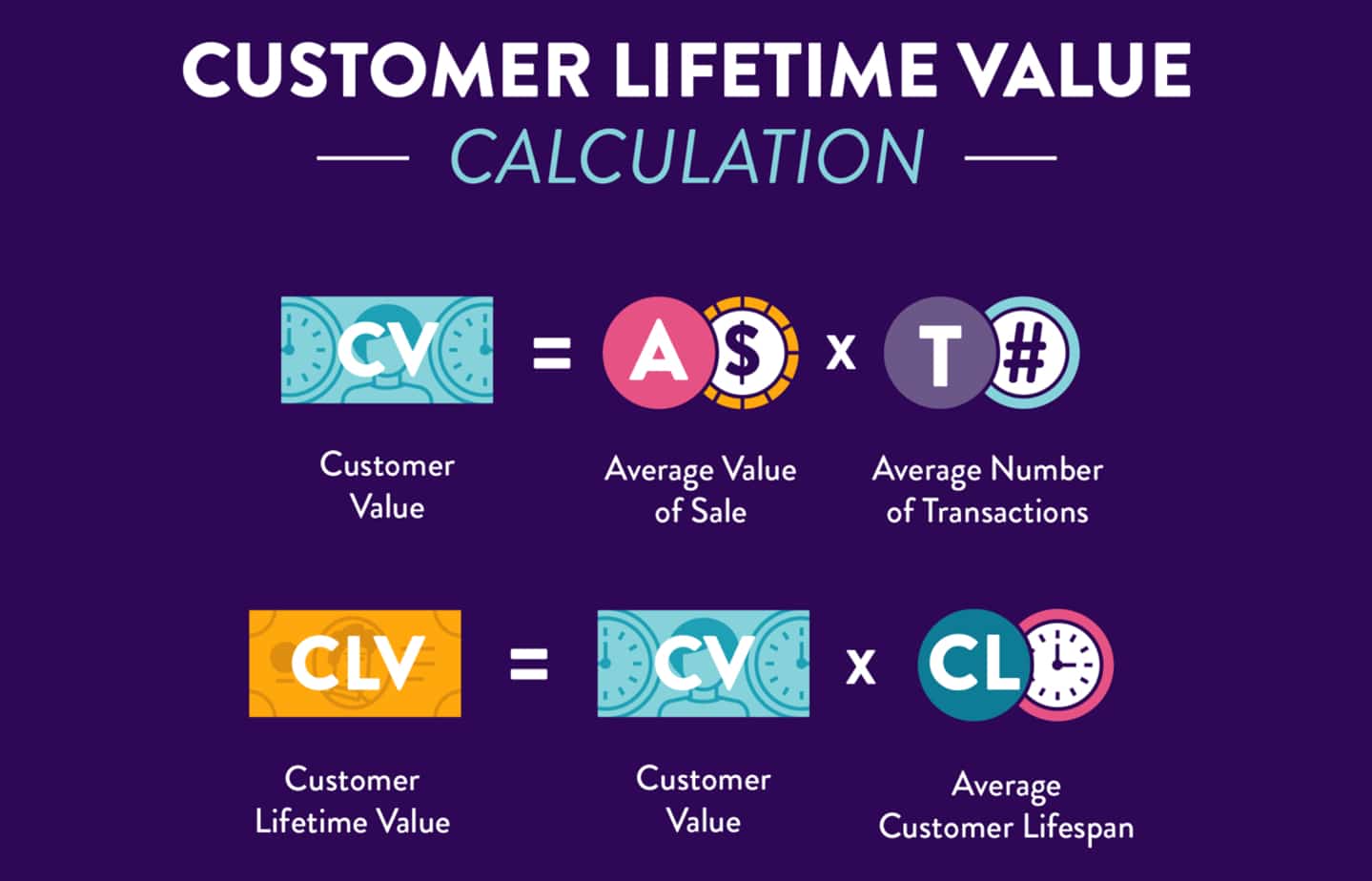
4. Customer Engagement
Customer engagement is an indicator that measures how your customers interact with your onboarding resources. If they’re not interested, it could mean that your welcome program isn’t being implemented effectively.
5. Course completion rate
The course completion rate tells you how many of your customers remain interested in your hospitality materials until the end. If not many customers complete certain sections of your onboarding process, it’s a clear sign that your content is too difficult, too confusing or not relevant enough.
#10 Don’t look for upsell absolutely
Take the time to build a relationship with your customer before offering anything else, don’t rush, and don’t seek upsell at all costs.
If you want to keep your customers, you need to set up a precise onboarding program to support them as they discover and use your product. So let him get comfortable with your initial product.
Make sure you create a relationship of trust with the customer, and ask them clearly if they are satisfied with your service and why. This will help you to understand his sticking points and then propose an additional offer that will meet his needs.
Examples of onboarding we like
Slack
Slack offers great onboarding. Whether you’re creating your own workspace or being invited to join one, you’ll always be accompanied by a Slackbot who guides you through the basic steps of signing up and gives lots of tips on creating a new channel, sending a message and adding people to channels.
Above all, Slack offers the option of leaving the onboarding tutorial at any time if you wish, while continuing to take advantage of its features.
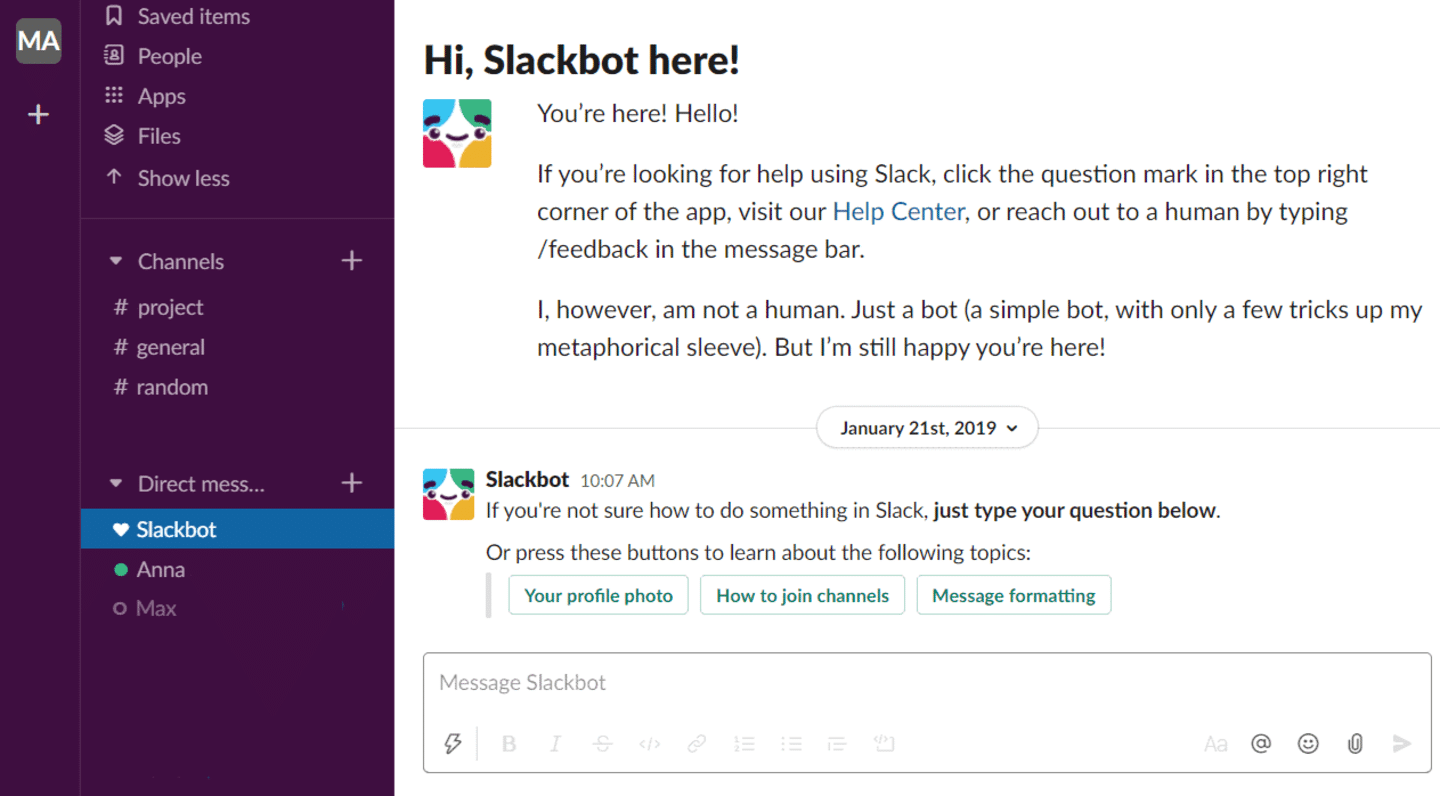
Trello
Trello, like Slack, also makes extensive use of empty states. As soon as you log in and open the welcome panel, the application introduces you to all the main functions, explaining what you can do to get started.
You immediately see how the process is organized, Trello’s main unit – the card – and what you can do with it. The home panel also provides a comprehensive overview of the available features, displaying the panel menu and a pop-up window inviting you to create a team.
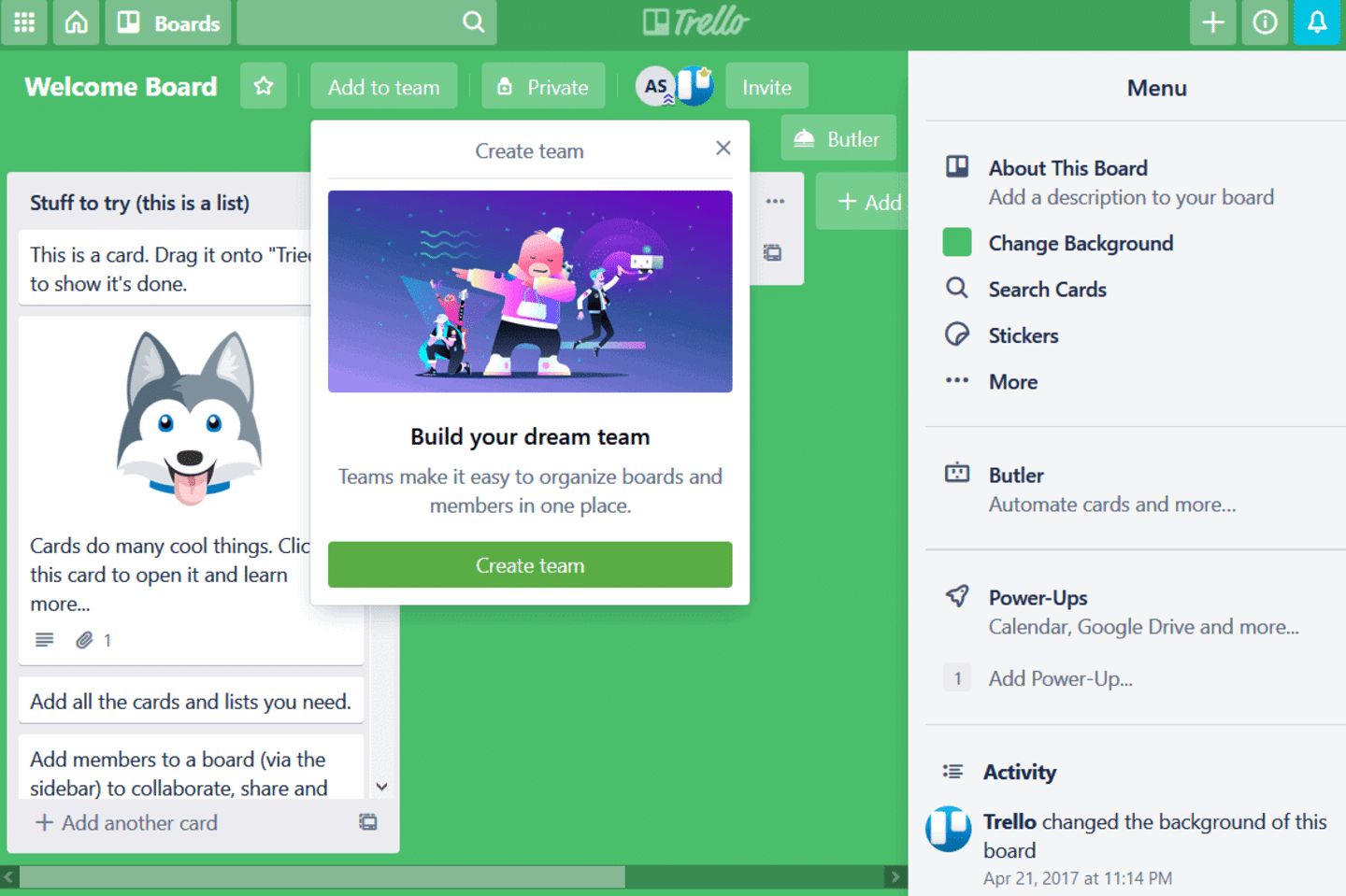
Chanty
Chanty is a chat tool with a rather user-friendly customer welcome flow. Everything you enter when setting up your account appears immediately in the corresponding fields of the user interface, and your profile is created as you type.
The tool uses an onboarding assistant bot, Rufus, which shows you all the product’s most important features. Rufus guides you through all the buttons on the chat screen, explaining what they’re for.
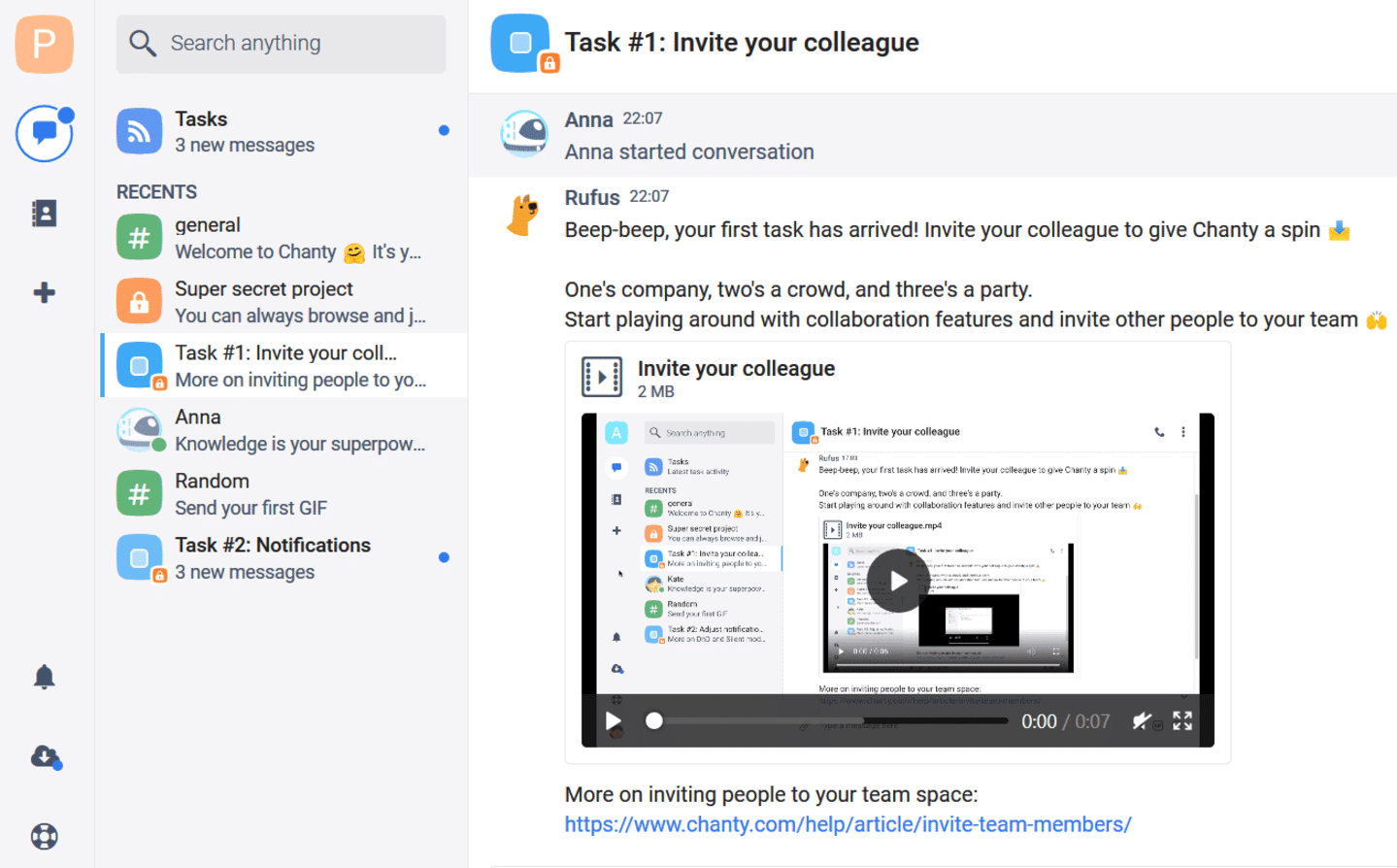
One of the strengths of Chanty’s onboarding program is that it includes a real hands-on exercise. After a quick tour, Rufus creates your very first task – Invite your colleague. This task is accompanied by a short video tutorial and a link to the knowledge base that provides more details on the subject. Not only do you get a basic understanding of the task concept, but you also start to build your team on Chanty.
Going further
- Check out our other articles on onboarding and related topics!
- Onboarding new sales staff: best practices
- Customer success tools | Top 10, best practices, and selection criteria
- Customer retention: complete guide and strategies

